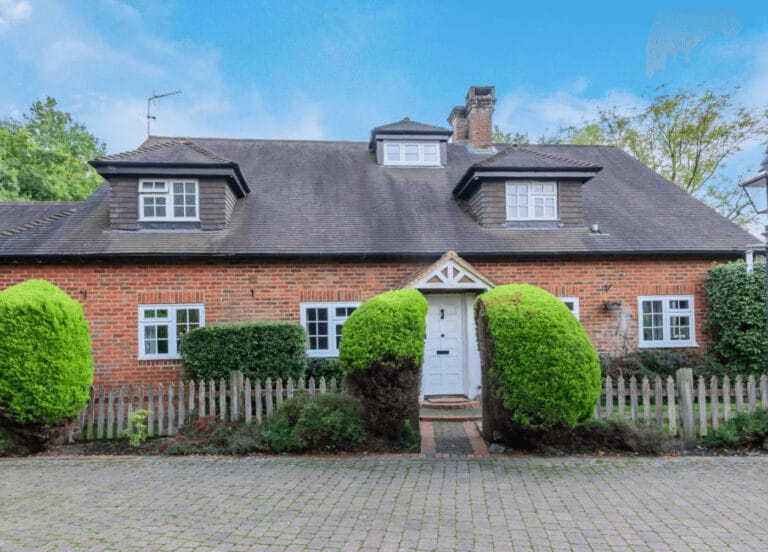Quick FAQs
[rank_math_rich_snippet id=”s-3df96960-7d6d-4230-81af-4c29a2e65142″]
Conservation areas in the United Kingdom are a testament to our nation’s architectural heritage. These areas are carefully designated to protect and preserve the historic buildings and landscapes that give character and identity to our towns and cities. When it comes to installing new windows and doors in such areas, it’s not just a straightforward construction project; it’s a delicate process that requires meticulous planning and adherence to stringent regulations.
Understanding Conservation Areas
Conservation areas are specific locations, usually within urban and suburban environments, that hold significant historical or architectural value. They are defined and protected by local planning authorities to ensure that any changes or developments within the area respect and retain the area’s unique character.
Preserving an Area’s Character
The purpose of conservation areas is to safeguard the character, history, and appearance of a place. This means that if you live in, or operate a business in, a conservation area and wish to replace or upgrade your windows and doors, you must do so with great care to ensure that the changes do not detract from the area’s special qualities.
Considerations when Installing Windows and Doors in Conservation Areas
Adhering to Regulations
Conservation areas are subject to strict regulations. In most cases, you’ll need planning permission for any changes to your windows and doors, even if it’s a like-for-like replacement. This is to ensure that the new fittings are in harmony with the existing character of the area.
Matching Architectural Styles
Architectural styles in the conservation area must be taken into consideration when looking to replace windows and doors on a property. Styles must be selected to match the overall architectural style. For example, Victorian-era architecture may have elaborate, decorative windows and doors, while a mid-century modern area may feature clean lines and large glass surfaces.
Ensuring Design Compatibility
When renovating or constructing buildings, it’s important to choose windows and doors that are compatible with the historical architecture of the area. This involves researching and replicating the styles, materials, and design elements prevalent during the time period of the area’s historical significance.
Considering Materials
The type of materials you can use for windows and doors is often specified in detail. Traditional materials like timber and metal might be preferred over uPVC, to add authenticity and maintain the area’s character.
Consulting Others Prior to Installation
It’s common for local planning authorities to consult with residents and other stakeholders before granting permission. This is to ensure that the changes are acceptable to the community.
Windows and Doors for Listed Buildings
If your property is a listed building located in a conservation area, the process of installing new windows and doors becomes even more complex. It is useful to consult heritage professionals, architects or conservation specialists who have experience of working with listed buildings.
When looking to install windows or doors in a listed property, you will need to adhere to both the regulations for listed buildings and the regulations for conservation areas. Prepare detailed plans and specifications for the proposed work and submit them to the relevant authorities for approval. Clearly outline how the installation will be carried out and demonstrate the adherence to preservation guidelines.
Maintain open communication with local planning authorities and historic environment officers. Seek their input and guidance throughout the process, and address any concerns they may have.
Remember that the specific requirements for installing windows and doors in a listed building can vary based on local regulations and the unique characteristics of the structure. Always consult with relevant authorities and professionals to ensure that the work aligns with preservation principles and legal requirements.
Top Tips for Installing Windows and Doors in a Conservation Area
- Consult with a professional
- Adapt existing structures
- Seek planning permission
- Select suitable materials
- Consult the community
- Conservation of landscaping
- Hire professionals for window and door installation
- Document the process
- Consider maintenance and aftercare
Consult with a professional
Your first step should be to consult with a professional architect or surveyor who specialises in conservation areas. They can guide you through the planning process and help you make choices that are in line with the area’s character.
Adapt existing structures
When adapting existing structures, strive to preserve and restore the original windows and doors. This not only maintains the historical character but also reduces waste by reusing existing materials.
Seek planning permission
Contact your local planning authority to discuss your plans and obtain the necessary planning permission. Be prepared to provide detailed plans and specifications for your windows and doors.
Select suitable materials
Choose materials and designs that match the historic character of the area. Traditional wooden windows and doors are often a safe choice, but your architect can provide specific recommendations.
Consult the community
Engage with your neighbours and the local community to explain your plans and seek their feedback. Addressing concerns and gaining support from the community can improve the likelihood of obtaining planning permission.
Conservation of landscaping
Windows and doors should be integrated with the surrounding landscape. This includes preserving trees, gardens, and other outdoor elements that contribute to the overall character of the area.
Hire professionals for window and door installation
Hire experienced professionals who specialise in working with historic buildings. Proper installation is crucial to maintaining the building’s structural integrity and historical character.
Document the process
Document the entire process, including before-and-after photographs, to create a record of the work carried out. This documentation can be important for future reference and for demonstrating compliance with preservation guidelines.
Consider maintenance and aftercare
Once your new windows and doors are installed, it’s important to maintain them regularly to ensure they continue to enhance the character of the conservation area. Regular inspections and timely repairs can help preserve the building over the long term.
Ready to take the next step to installing windows and doors in a conservation area in the UK?
This carefully orchestrated process involves planning, consultation, and adherence to strict regulations. However, it’s a crucial part of preserving the historical charm and character of these special places up and down the country.
If you are considering such a project in your property within a conservation area, remember that professionals who specialise in heritage conservation can be your greatest allies in navigating this complex process and ensuring that your renovations contribute to the area’s continued preservation.
Need advice with installing new windows and doors in a conservation area?
If you are considering such a project in your property within a conservation area, remember that professionals who specialise in heritage conservation can be your greatest allies in navigating this complex process and ensuring that your renovations contribute to the area’s continued preservation
We’ve been installing Windows, Doors and Conservatories in conservation areas of the Three Counties for many years. Get in touch today.

